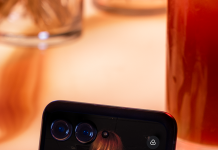
The Telstra UNO came out of nowhere a couple of months ago, launching without fanfare into Coles stores where we saw it advertised at a price more usually occupied by the ‘dumbphone’ end of the market. At $44.50 – 50% off its usual price of $89 – it seemed as though it could only be a really bad phone.
I was in the market for a cheap Android device with which to track my running and play podcasts, as I’m swapping phones fairly regularly, this seemed to fit the bill. I purchased one, and have been living with it for a couple of months now.
The phone is actually manufactured by ZTE and is known outside Telstra as the T12. The user manual is available to view online here.
Specifications
- 2.8″ TFT Display 240×320 resolution
- 650MHz CPU
- 150MB Storage with microSD card slot (2GB microSD Card included)
- 2MP Rear Camera, VGA Front Camera
- Wi-Fi, Bluetooth V3, GPS
- Accelerometer, FM Radio
- Android 2.3.5
- Li-Po 1280mAh battery
- Up to 200 hours Standby
- Up to 150 minutes Talk Time
- 104x56x13.3mm @ 99 grams
Appearance and Design
The UNO is a very small phone, completely encased in a slick plastic shell. Button placement is a little off due to the micro USB port at the top on the left edge of the device. The power button is located on top, and the volume rocker is on the right edge.

There are 3 capacative buttons on the front of the device, just below the display (Back, Menu and Search) with a physical circular home button located below. There’s a microphone to the right of the home button. While it feels a little out of the ordinary in a late-2012 Android phone, the circular home button is easy to locate without looking at the phone – on this point, the design is quite good.

The back cover of the phone is removable plastic, which has a hole in the upper right corner for the 2MP camera, and the Telstra NextG logo printed on it. Removing the cover can be a little difficult as there’s no obvious place to lever the cover off – I found the best place was to start at the microUSB port. Underneath the cover you’ll find a removeable battery, SIM tray and microSD slot.

The slick back of the UNO doesn’t do anything great for gripping the phone – a more matte or textured plastic like the Telstra Smart Touch 2 would probably have been better ergonomically – but I’m sure that somewhere in the design process, someone thought glossy plastic would make the phone look good.

Upon purchasing of the UNO, I was pleasantly surprised to find that the miniscule pricetag includes $10 worth of pre-paid Telstra credit as well as a 2GB microSD card to expand the relatively tiny internal storage of the phone. This is an even better deal at the current 50% off price. Telstra did miss a massive opportunity and completely failed to deliver an Uno app pre-installed on the device.
The UNO comes with a Micro USB cable, a 5V/700mA charger and headphones.
Software
The UNO is running Android 2.3.5. There’s nothing to indicate that ZTE or Telstra will carry out any software updates to upgrade the OS beyond what it currently is, and that’s OK for the device’s price and target market.
On top of an otherwise stock Android experience, ZTE has incorporated Quick Settings in the notification area, a welcome customisation. Carrier bloatware is at a bare minimum, with the TelstraOne app and various widgets and web shortcuts to Telstra services pre-installed – this seems to be Telstra’s standard customisation stack in recent times, as seen on the RAZR HD and RAZR M.
Documents-To-Go, Filer and Sound Recorder apps have been included, but with ROM at 150MB I don’t think ZTE or Telstra wanted to add too much to this phone.
Usage
The phone works well, and the 2.8″ screen is functional. There’s occasionally a missed touch, but these instances are generally few and far between. The screen is fairly easy to read indoors, but in bright sunlight it washes out easily and you really need to increase the brightness in order to see anything.
Going from a 4.7″ HD screen on the Galaxy Nexus to a 2.8″ LCD is a jarring experience to say the least, and I really can’t see anyone using this phone to view anything more than the absolute basics in terms of web content or emails.
The UNO has fairly low volume on the 3.5mm headphone jack, however volume was quite passable on the external speaker, which doubles as the earphone and is the only external speaker on the phone. After installing Volume+, I was able to hear without worrying about volume when listening to podcasts through the headphones. In-call sound quality is acceptable, but this phone is nowhere near delivering HD Voice quality calls.
Mobile reception is good as can be expected from a Telstra NextG phone. Notably, the phone had a hard time remaining connected to wifi routers – I often found I had to sit right next to the router to maintain a connection. Bluetooth is decent in terms of connecting and maintaining the connection to a headset, and I can’t complain about anything on this front.
The inclusion of an FM Radio in phones still puzzles me, but I get the feeling the FM Radio is standard part of the chips used these days and it just gets added as a bonus specification. Nevertheless it works well once headphones are connected, although reception isn’t crystal clear.
The phone takes a little while to pick up a GPS signal, but once locked on it manages to hold on OK – it tracked my runs quite admirably in My Tracks.
Camera
The camera is unfortunately not really worth discussing.
The UNO packs a 2MP rear facing camera, only really worth using if you’re absolutely desperate to get the shot and have absolutely no other way to capture the moment. There’s no flash, so if you’re taking pictures indoors or in low-light you’ll be very disappointed with the results.
It works – which is all well and good – however it’s really quite bad. At this price, you really can’t expect anything other than a basic camera.
Samples
[nggallery id=156]
Performance
The UNO is not going to set the world aflame, however for the most part when you’re buying a phone in this end of the market you’re not looking to play the latest Need for Speed or take high res HDR photos.
The phone is powered by a 650MHz processor. As long as you don’t expect blazing benchmark scores, it performs OK. I keep a minimum app load – basically, just Pocket Casts, My Tracks and Tweakdeck. In this configuration, the phone struggles a little but still performs acceptably. Browsing the web with such a small screen was not exactly a pleasant experience, but it was able to carry out the function, so it’s hard to complain.
Battery life is disappointingly nothing to write home about. On 3G the battery lasts way less than a day, however I found that when I didn’t sync Gmail, Twitter and other background services it was alright. I generally leave the phone on but with all wireless connections switched off – only using it for podcasts and GPS tracking – and only have to charge it every 3-to-4 days.
Conclusion
At this end of the market the Telstra UNO is a pretty decent option. I purchased the phone for myself and haven’t regretted it. It tracks my runs, keeps my podcasts in line and has even served as a Wi-Fi access point on one occasion.
At $89 you might think twice, but at the sale price of $44.50 I’m inclined to forgive pretty much anything – it really brings it down to the realm of an impulse purchase. If you’re in the market for something to play with, or even just a cheap MP3 player (once you add a microSD card), I recommend you check it out.
The Telstra UNO is on sale for $44.50 (a 50% discount) from Coles until November 20.




